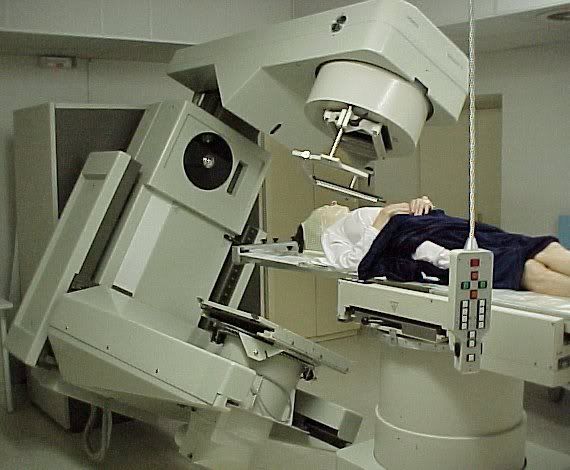Use of Flexible Sigmoidoscopy to Screen for Colorectal Cancer in HIV-Infected Patients 50 Years of Age and Older.
SINCE THE INTRODUCTION OF highly active antiretroviral therapy (HAART), significant shifts have occurred in the frequency and clinical presentation of AIDS-defining conditions and AIDS-related deaths. Improvements in the life expectancy of patients infected with human immunodeficiency virus (HIV) make it possible and important to evaluate and plan for the long-term health maintenance of these individuals.
Although colorectal cancer (CRC) is the fourth most common cancer in the United States, it remains the second leading cause of cancer-related mortality, with more than 56 000 deaths resulting from the disease in 2005. It is estimated that a person dying of CRC loses 14 years of life. Screening for CRC starting at the age of 50 years for average-risk individuals reduces mortality from the disease and is recommended by the US Preventive Services Task Force, the American Cancer Society, the US Multi-Society Task Force on Colorectal Cancer, and others.
Even though the life expectancy of many HIV-infected patients has increased well beyond the age of 50 years, there are no published data on the utility of CRC screening in this population. Therefore, the aims of this study were to evaluate the prevalence of colonic neoplasms detected by flexible sigmoidoscopy among patients with HIV and to determine factors associated with colonic neoplasms in this population. Because patients with HIV are chronically immunosuppressed, which may increase their risk for the development of malignancies, we hypothesized that they would be more likely to have colonic neoplasms than those without HIV.
COMMENT
In the present study, we demonstrated that neoplastic lesions detected by screening flexible sigmoidoscopy were significantly more common in HIV-infected patients than in control subjects without HIV. This clinically important finding has substantial implications for the estimated 1 million persons living with HIV in the United States, especially since many of these individuals are now living well beyond 50 years of age.
Compared to the pre-HAART era, patients with HIV in the HAART era have a lower incidence of AIDS-defining malignancies such as non-Hodgkin lymphoma, Kaposi sarcoma, and cervical cancer, although the incidence of these malignancies is still higher than in the general population. Several recent studies have demonstrated that non–AIDS-defining malignancies account for an increasing proportion of cancers seen in HIV-infected patients, with the proportion of individuals dying as a result of these malignancies increasing from less than 1% in the pre-HAART era to 13% currently. Colorectal cancer has been identified as one of the non–AIDS-defining malignancies that may be increasing in incidence in the HIV population. For example, a prospective cohort study of 2882 patients with HIV reported that the annual incidence of CRC increased from 0.65 per 1000 patient-years in the pre-HAART era to 2.34 per 1000 patient-years between 1997 and 2002. However, other studies showed that the incidence of CRC is not higher in HIV-infected patients than in the general population and that, when compared with the pre-HAART era, there has not been an increase in CRC incidence in HIV-infected subjects. These contradictory findings highlight the need for large, well-designed studies to evaluate CRC in this population.
Non–AIDS-defining malignancies such as CRC may develop at an earlier age and be more aggressive in HIV-infected patients than in individuals without HIV. Despite the potential increase in incidence, younger age at onset, and more aggressive course of CRC in patients with HIV, a recent study showed that CRC screening is underused in these individuals. In a retrospective study of 302 HIV-infected patients 50 years of age and older who were seen in the outpatient clinics at a single medical center, only 5.3% of the patients with HIV had ever undergone a flexible sigmoidoscopy compared with 17.5% of age-matched controls without HIV. Furthermore, that study demonstrated that other screening modalities, such as fecal occult blood testing and colonoscopy, were also underused in HIV-infected patients.
Another interesting and important finding in our study was the significant independent association between a longer duration of HIV infection and neoplastic lesions in the distal colon. One possible explanation is that the risk for developing neoplastic colonic lesions among patients with HIV increases with age, as it does among patients without HIV. As survival times increase as a result of the use of HAART, the risk of the development of neoplastic lesions also increases as a result of the aging of the population.
However, given that HIV-infected patients may develop colonic lesions at a younger age than those without HIV, it is possible that either HIV itself or immune system dysfunction contributes to the development of neoplastic colonic lesions. The concept of immune system dysfunction being associated with an increased risk of colorectal neoplasia is supported by our study, because we found that lower CD4 lymphocyte counts were also independently associated with neoplastic lesions in the distal colon. This association suggests the possibility that there is an antineoplastic response associated with higher CD4 cell counts, and this hypothesis is supported by data demonstrating the importance of CD4 and CD8 cells as part of the antitumor response. Taken together, the duration of HIV infection and the CD4 lymphocyte count may be useful markers to target HIV-infected individuals for CRC screening.
The strengths of our study include the prospective study design, the collection of detailed demographic and clinical data, the inclusion of a control group, and the performance of colonoscopy in a high proportion of subjects with positive results on flexible sigmoidoscopy. Also, this study is unique because we are unaware of any published studies that have evaluated screening flexible sigmoidoscopy in patients with HIV.
However, several limitations should be considered when interpreting our findings. First, the study was conducted at a single Veterans Affairs Medical Center and the majority of our patients were men. Therefore, our findings may not be generalizable to other clinical settings or to women. Second, our study population included only 165 HIV-infected patients, and larger prospective studies are needed to address this clinically important issue. Third, HIV testing was not performed on all subjects in the control group, and it is possible that some of these individuals had undiagnosed HIV infection. Nonetheless, we do not think that this had a substantial impact on our findings, because the prevalence of polyps or masses in the distal colon of our control subjects (23.0%) was remarkably similar to the frequency reported among the 64 658 average-risk subjects evaluated in the multicenter Prostate, Lung, Colorectal, and Ovarian Cancer Screening Trial (23.4%).
Because the endoscopists who performed the sigmoidoscopies were not blinded to the HIV status of the patients, it is possible that there was ascertainment bias. However, this was unlikely to be a major factor, as the endoscopists were not aware of the specific aims of this study. Although flexible sigmoidoscopy is less sensitive than colonoscopy for the detection of neoplastic lesions, this should not have biased our results in favor of detecting more lesions in patients with HIV, as both groups underwent the same procedure and had a similar depth of insertion of the sigmoidoscope. Finally, we were not able to determine the prevalence of proximal neoplastic lesions in patients without distal neoplastic lesions because colonoscopy was only performed in those with positive results on flexible sigmoidoscopy. This important limitation highlights the need for screening colonoscopy studies in this population.
In conclusion, flexible sigmoidoscopy is a valuable tool to screen for CRC in patients with HIV. The high prevalence of colonic neoplasms in patients with HIV underscores the need to increase awareness of CRC screening in this population. Also, large, well-designed, multicenter studies are needed to confirm our findings and to evaluate the utility of screening colonoscopy in patients with HIV infection.
Conclusions:
Patients infected with HIV are more likely to have colonic neoplasms on screening flexible sigmoidoscopy than those without HIV, and these individuals should be offered colorectal cancer screening.




0 Comments:
Post a Comment
<< Home